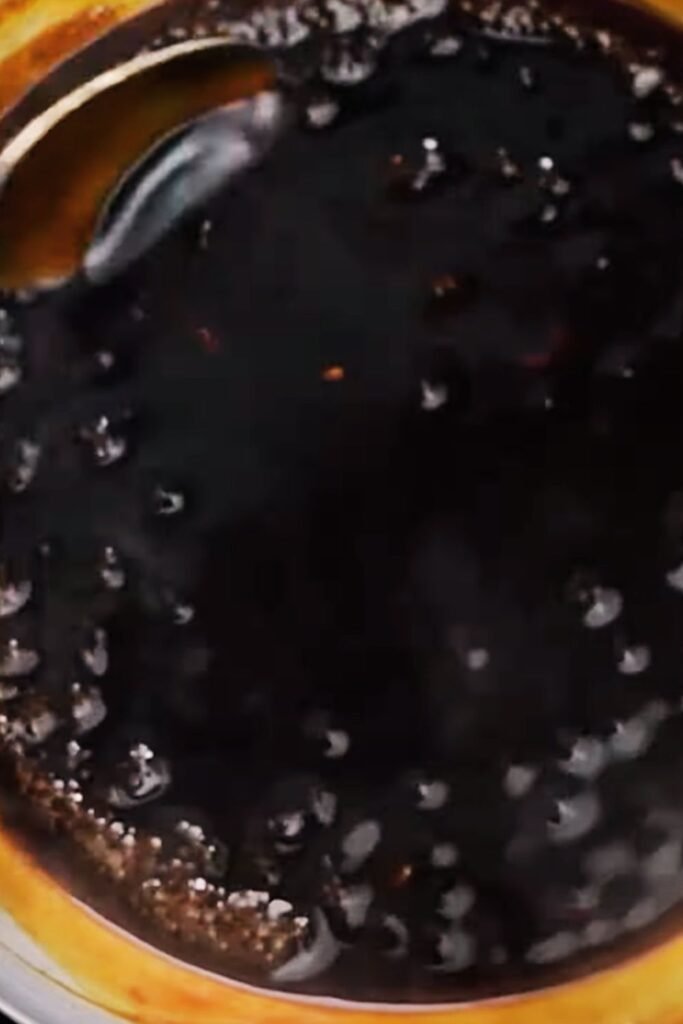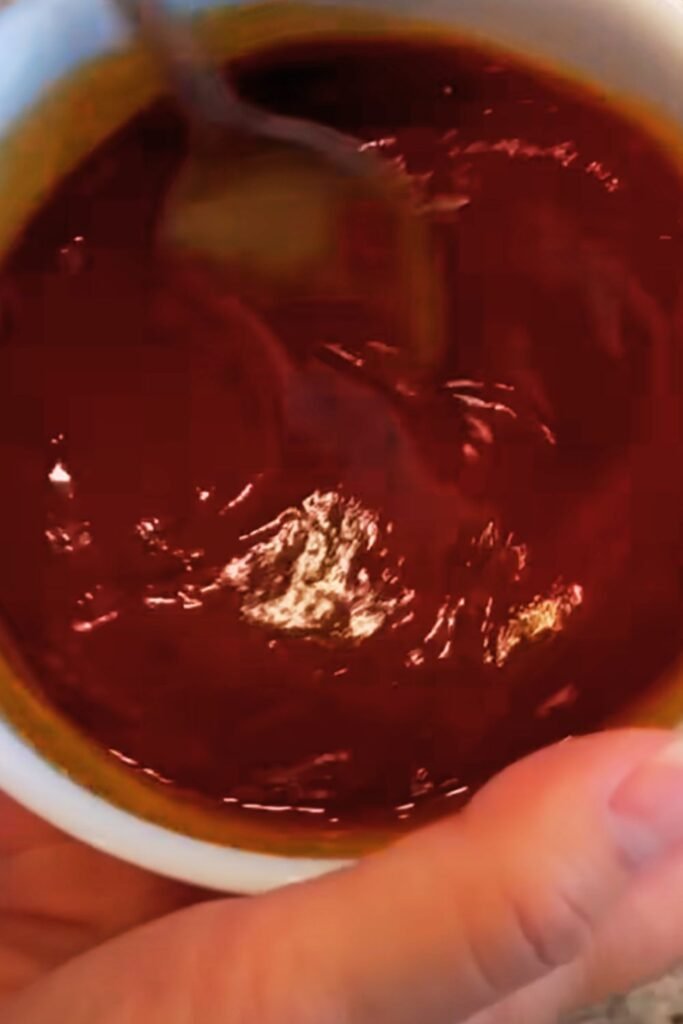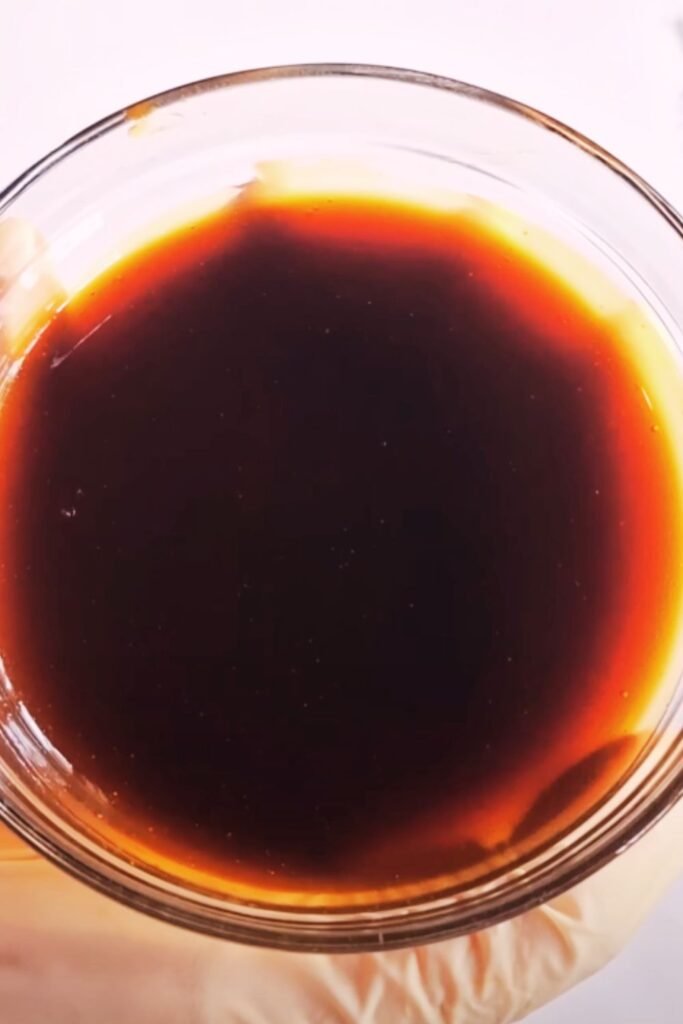I still remember the first time I tasted authentic Spanish flan at my grandmother’s kitchen table in Valencia. The silky custard melted on my tongue while the amber caramel provided the perfect sweet contrast. That moment sparked my lifelong love affair with this elegant dessert, and over the years, I’ve perfected a foolproof recipe that brings that same magic to my own kitchen.
Spanish flan, known as “flan de huevo” in Spain, represents more than just a dessert—it’s a culinary tradition that spans generations. This creamy custard topped with liquid caramel has graced Spanish tables for centuries, evolving from simple monastery recipes to become one of the country’s most beloved sweets.
What makes Spanish flan truly special isn’t just its incredible taste, but its surprising simplicity. With just five basic ingredients and my step-by-step approach, you’ll create a restaurant-quality dessert that looks far more complicated than it actually is. I’ve spent years refining this technique, learning from both successes and failures, and I’m excited to share every secret I’ve discovered along the way.
Understanding Spanish Flan: The Foundation of Excellence
Before diving into my recipe, let me explain what makes authentic Spanish flan unique among custard desserts. Unlike French crème caramel or Mexican flan, Spanish flan achieves its characteristic texture through a specific balance of whole eggs, milk, and sugar that creates an incredibly smooth, almost silk-like consistency.
Key Characteristics of Authentic Spanish Flan:
- Silky, smooth texture without any graininess
- Rich golden color from whole eggs and caramelized sugar
- Perfect balance between sweetness and subtle egg flavor
- Firm enough to unmold cleanly yet tender enough to cut with a spoon
- Glossy caramel sauce that pools around the custard
The magic happens through a gentle cooking process called a “baño maría” or water bath, which ensures even heat distribution and prevents the custard from curdling or developing an unpleasant texture.

Essential Ingredients: Quality Makes the Difference
My years of flan-making have taught me that ingredient quality directly impacts the final result. Here’s what I always use and why each component matters:
For the Caramel:
- 1 cup granulated white sugar
- 1/4 cup water
For the Custard:
- 6 large eggs (room temperature)
- 1 can (14 oz) sweetened condensed milk
- 1 can (12 oz) evaporated milk
- 1 teaspoon pure vanilla extract
- Pinch of salt
Ingredient Selection Guide
| Ingredient | Why Quality Matters | My Recommendations |
|---|---|---|
| Eggs | Fresh eggs create smoother custard with better color | Use eggs less than one week old, bring to room temperature |
| Sweetened Condensed Milk | Provides richness and helps prevent curdling | Stick to trusted brands like Eagle Brand or Carnation |
| Evaporated Milk | Adds creaminess without excess water content | Choose whole milk versions, avoid low-fat alternatives |
| Vanilla Extract | Pure extract enhances flavor complexity | Real vanilla extract, never imitation |
| Sugar for Caramel | Granulated sugar caramelizes most evenly | Regular white sugar works best, avoid superfine |
I’ve experimented with various milk combinations over the years, and this specific ratio of sweetened condensed milk to evaporated milk creates the perfect balance of richness and texture. The condensed milk provides sweetness and helps stabilize the custard, while evaporated milk contributes to that signature silky mouthfeel.
My Step-by-Step Spanish Flan Recipe
After making hundreds of flans, I’ve developed a methodical approach that virtually guarantees success. Follow these steps precisely, and you’ll achieve professional results every time.
Step 1: Preparing the Caramel
The caramel forms the soul of Spanish flan, so getting this right is crucial. I make my caramel using the dry method, which gives better control over the color and prevents crystallization.
- Set up your workspace: Have your flan mold or 8-inch round cake pan ready. I prefer metal molds because they conduct heat more evenly.
- Start the caramel: Place 1 cup of sugar in a heavy-bottomed saucepan over medium heat. Don’t stir initially—just let the sugar begin to melt around the edges.
- Monitor carefully: As the sugar melts, gently tilt the pan to distribute the melting sugar. The process takes about 8-10 minutes. You’ll see it progress from clear to golden to deep amber.
- Add water cautiously: When the caramel reaches a deep amber color (like honey), remove from heat and carefully add 1/4 cup water. It will bubble violently, so be careful!
- Coat the mold: Immediately pour the hot caramel into your mold, tilting to coat the bottom and sides evenly. Work quickly—caramel hardens fast.
Pro Tip: I always make caramel first and let it cool while preparing the custard. This prevents the hot caramel from cooking the eggs when you add the custard mixture.
Step 2: Creating the Perfect Custard
The custard mixture requires gentle handling to maintain that silky texture I love so much.
- Combine ingredients: In a large bowl, gently whisk the 6 eggs until just combined. Don’t create too much foam.
- Add milk gradually: Slowly pour in the sweetened condensed milk, then the evaporated milk, whisking gently to combine.
- Strain the mixture: This step is crucial! Pour the entire mixture through a fine-mesh strainer into another bowl. This removes any lumps and ensures perfect smoothness.
- Add vanilla: Stir in the vanilla extract and a pinch of salt.
Step 3: Assembly and Baking
- Preheat oven: Set your oven to 350°F (175°C).
- Pour custard: Gently pour the strained custard mixture over the hardened caramel in your mold.
- Prepare water bath: Place the flan mold in a larger roasting pan. Pour hot water into the roasting pan until it reaches halfway up the sides of the flan mold.
- Bake: Cook for 50-60 minutes, until a knife inserted in the center comes out clean.
- Cool completely: Remove from water bath and let cool to room temperature, then refrigerate for at least 4 hours or overnight.

Mastering the Unmolding Process
Unmolding flan intimidated me for years until I learned these professional techniques. Now I can achieve clean releases every time.
The Perfect Unmolding Technique
- Run a knife: Carefully run a thin knife around the edges of the mold to loosen the flan.
- Prepare your plate: Choose a serving plate with slightly raised edges to contain the caramel sauce.
- The flip: Place the serving plate over the mold, then quickly invert both together. Don’t lift the mold immediately—let gravity do the work.
- Wait patiently: Leave the mold in place for 2-3 minutes to allow the caramel to release naturally.
- Lift carefully: Slowly lift the mold. If any caramel sticks to the bottom, scrape it out and drizzle over the flan.
Troubleshooting Common Flan Problems
Through my years of flan-making, I’ve encountered every possible issue. Here are my solutions to the most common problems:
Texture Issues and Solutions
| Problem | Cause | My Solution |
|---|---|---|
| Grainy texture | Eggs cooked too quickly or temperature too high | Use water bath, lower oven temperature to 325°F |
| Bubbles in custard | Over-mixing or air incorporation | Strain mixture, tap mold to release bubbles |
| Rubbery consistency | Overcooked or too many eggs | Reduce cooking time, check doneness with knife test |
| Caramel too hard | Cooked caramel too long | Add more water when making caramel, work quickly |
| Won’t unmold | Caramel crystallized or flan not fully cooled | Warm bottom of mold briefly in hot water |
My Troubleshooting Checklist
When things go wrong, I follow this systematic approach:
For Cooking Issues:
- Check oven temperature with thermometer
- Ensure water bath maintains consistent level
- Verify doneness with knife test in center
- Cool gradually to prevent cracking
For Unmolding Problems:

- Make sure flan is completely chilled
- Run knife around edges before flipping
- Use quick, confident motion when inverting
- Be patient—sometimes it takes a few minutes
Variations and Flavor Adaptations
After mastering the basic recipe, I love experimenting with different flavors that complement the traditional custard base.
Classic Variations I Recommend
Coconut Flan: Replace half the evaporated milk with coconut milk and add 1/2 cup toasted coconut flakes.
Coffee Flan: Dissolve 2 tablespoons instant espresso in the warm milk before adding to eggs.
Orange Flan: Add 2 tablespoons fresh orange zest and replace vanilla with orange extract.
Almond Flan: Substitute almond extract for vanilla and garnish with toasted almonds.
Advanced Flavor Combinations
| Flavor Profile | Ingredients to Add | Serving Suggestions |
|---|---|---|
| Chocolate Orange | 2 oz melted dark chocolate + orange zest | Fresh berries, mint garnish |
| Cinnamon Spice | 1 tsp ground cinnamon + 1/4 tsp nutmeg | Caramelized pears, whipped cream |
| Lemon Lavender | Lemon zest + 1/2 tsp dried lavender | Shortbread cookies, fresh fruit |
| Rum Caramel | 2 tbsp dark rum in caramel | Tropical fruit salad |
Nutritional Information and Dietary Considerations
Understanding the nutritional content helps me make informed decisions about serving sizes and frequency.
Complete Nutritional Breakdown (Per Serving, 8 servings total)
| Nutrient | Amount | % Daily Value |
|---|---|---|
| Calories | 285 | 14% |
| Total Fat | 8g | 12% |
| Saturated Fat | 4g | 20% |
| Cholesterol | 165mg | 55% |
| Sodium | 125mg | 5% |
| Total Carbs | 45g | 15% |
| Sugars | 44g | – |
| Protein | 10g | 20% |
| Calcium | 280mg | 28% |
| Vitamin A | 320 IU | 6% |
Dietary Modifications I’ve Successfully Tested
Lower Sugar Version: Reduce caramel sugar to 3/4 cup and use sugar-free sweetened condensed milk.
Dairy-Free Alternative: Substitute coconut milk and dairy-free condensed milk (texture will be slightly different).
Reduced Fat Option: Use low-fat evaporated milk and egg whites (2 whites per whole egg), though texture becomes less rich.
Serving Suggestions and Presentation Ideas
Presentation elevates flan from simple dessert to elegant finale. Here are my favorite ways to serve this classic.
Traditional Spanish Service
In Spain, flan is typically served simply, allowing the dessert to shine on its own. I follow this approach for family dinners:
- Serve chilled on individual plates
- Allow caramel to pool naturally around the custard
- Provide small spoons for the perfect bite ratio
- Offer fresh fruit as a palate cleanser
Elevated Presentation Techniques
For special occasions, I enhance the presentation:
Restaurant-Style Plating:
- Use white plates to showcase the golden color
- Drizzle additional caramel in decorative patterns
- Garnish with fresh mint or edible flowers
- Add texture with toasted nuts or cookie crumbs
Family-Style Serving:
- Present the whole flan on a pedestal cake stand
- Surround with seasonal fruits
- Provide cake server and dessert plates
- Let guests admire before slicing
Professional presentation elevates the dining experience
Storage and Make-Ahead Tips
One of flan’s greatest advantages is its make-ahead nature. I often prepare it days in advance for dinner parties.
Optimal Storage Methods
Refrigerator Storage:
- Keep covered in original mold up to 3 days before unmolding
- Once unmolded, cover loosely with plastic wrap
- Consume within 4-5 days for best quality
- Store at consistent 38-40°F temperature
Freezing Guidelines:
- Wrap tightly in plastic wrap and aluminum foil
- Freeze up to 2 months (though texture may change slightly)
- Thaw overnight in refrigerator before serving
- Quality is best when consumed fresh
Make-Ahead Strategy for Entertaining
My timeline for stress-free entertaining:
3 Days Before: Make flan, keep in mold, refrigerate Day Before: Unmold onto serving plate, cover, refrigerate Day of Party: Remove from refrigerator 30 minutes before serving for optimal temperature
Cultural Context and History
Understanding flan’s cultural significance enriches the experience of making and serving this dessert. My travels through Spain revealed fascinating regional variations and traditions.
Regional Spanish Variations
Catalonian Crema Catalana: Similar to flan but topped with hard caramelized sugar crust, served in individual ramekins.
Asturian Flan de Queso: Incorporates local cheese for a tangy twist on the classic recipe.
Andalusian Tocino de Cielo: An ultra-rich version using only egg yolks, creating an intensely golden custard.
Traditional Occasions for Serving Flan
In Spanish culture, flan appears at significant celebrations:
- Sunday family dinners
- Religious holidays and feast days
- Wedding celebrations
- Birthday parties
- Christmas and Easter gatherings
Questions and Answers
Q: Why does my flan have a grainy texture instead of being smooth? The most common cause is cooking at too high a temperature or incorporating too much air during mixing. Always use a water bath (baño maría) to ensure gentle, even cooking, and strain your custard mixture before baking to remove any lumps. I also recommend whisking gently rather than vigorously to avoid creating foam.
Q: How can I tell when my flan is perfectly cooked? I use the knife test—insert a thin knife about 1 inch from the center. It should come out clean or with just a few moist crumbs. The center should still have a slight jiggle when you gently shake the mold. Remember, it continues cooking slightly as it cools, so slightly underdone is better than overcooked.
Q: My caramel turned hard and crystallized. What went wrong? Crystallization usually occurs when sugar crystals form on the sides of the pan or when the mixture is stirred too early. To prevent this, I clean the sides of the pan with a wet pastry brush and avoid stirring until the sugar is mostly melted. If it does crystallize, start over—there’s no reliable way to fix it.
Q: Can I make individual flans instead of one large one? Absolutely! I often make individual flans in 6-ounce ramekins for dinner parties. Divide the caramel and custard equally among 6-8 ramekins, reduce cooking time to 25-35 minutes, and check doneness with the knife test. They’re perfect for elegant presentation and portion control.
Q: Why won’t my flan release cleanly from the mold? This usually happens when the caramel is too thick or the flan isn’t completely cooled. Make sure your caramel has enough water (it should be pourable when hot), and always chill the flan for at least 4 hours. If it still sticks, briefly warm the bottom of the mold in hot water for 30 seconds before unmolding.
Q: How far in advance can I make flan for a dinner party? Flan actually improves with time! I routinely make it 2-3 days ahead, keeping it in the original mold until the day I plan to serve it. The flavors meld beautifully, and the texture becomes even more silky. Just unmold it on the day of serving for the best presentation.
Q: What’s the difference between Spanish flan and other custard desserts? Spanish flan uses a specific ratio of whole eggs to milk that creates its characteristic silky texture. Unlike French crème brûlée, which uses heavy cream and is torched, or Mexican flan, which often includes cream cheese, Spanish flan relies on the perfect balance of eggs, condensed milk, and evaporated milk for its distinctive consistency and flavor.
Q: Can I reduce the sugar content without affecting the texture? You can reduce the sugar in the caramel slightly, but I don’t recommend changing the custard proportions dramatically. The sweetened condensed milk not only provides sweetness but also helps stabilize the custard. For a less sweet version, I suggest using three-quarters of the caramel sugar rather than modifying the custard base.
Creating perfect Spanish flan has become one of my greatest culinary joys. This dessert represents the beautiful simplicity of Spanish cuisine—taking basic ingredients and transforming them into something truly extraordinary through technique and patience. Every time I unmold a perfectly silky flan with its glossy caramel coating, I’m reminded why this dessert has captivated hearts for generations.
The key to success lies in understanding each step’s purpose and not rushing the process. From the careful caramelization of sugar to the gentle cooking in a water bath, every technique contributes to that final moment of perfection. I encourage you to embrace both the successes and the learning experiences—even my early failures taught me valuable lessons that improved my technique.
Whether you’re preparing this for a special celebration or simply treating your family to an authentic taste of Spain, remember that the love and care you put into making flan will be evident in every spoonful. The smiles and satisfied sighs from your guests will make every minute of preparation worthwhile.
Now it’s time to gather your ingredients, warm up your oven, and create some magic in your own kitchen. ¡Buen provecho!